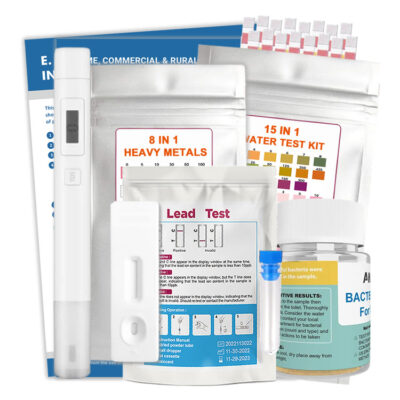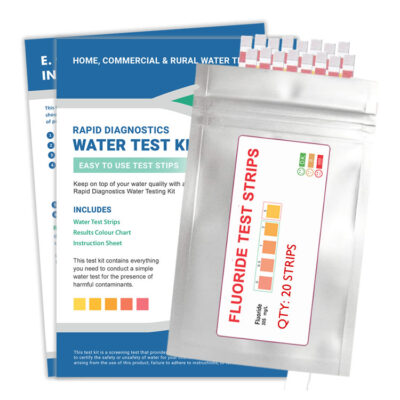Maintaining the correct chemical balance in your pool or spa water is essential for ensuring clean, clear, and safe swimming conditions. This dual test kit allows you to measure both chlorine levels and pH using simple colorimetric testing methods. The kit includes two chemical reagents—Phenol Red for testing pH and Orthotolidine (OTO) for testing chlorine—as well as two transparent comparison vials with colored caps and printed scales.
Before You Begin
To obtain accurate readings, it’s important to follow best practices for water sampling and reagent handling. Always rinse the vials before use to remove any residues from previous tests. Collect water from approximately 18 inches (or 40 cm) below the surface of the pool to avoid surface contaminants or aeration effects near jets and inlets. Perform tests in a well-lit environment so you can clearly observe and match the color changes.
Testing Chlorine Levels
This part of the kit measures total chlorine in your pool or spa water, which includes both free chlorine (the active disinfectant) and combined chlorine (which may cause odor and irritation). Proper chlorine levels are crucial for disinfection and swimmer health.
- Rinse the vial with the yellow cap using clean pool water.
- Fill the vial to the marked line with water collected from 40 cm below the surface.
- Add 4 drops of the Orthotolidine (OTO) reagent.
- Seal the vial with the cap and gently invert it to mix the solution.
- Observe the resulting color and compare it with the chlorine scale printed on the side of the vial.
The ideal chlorine concentration for most pools is between 1.0 and 1.5 ppm. If the reading is too low, your pool may be under-sanitized, which can increase the risk of algae growth and bacteria. If it’s too high, you may experience eye or skin irritation, and it could damage pool equipment over time.
Testing pH Levels
The pH level of your pool water affects everything from swimmer comfort to chlorine effectiveness and equipment longevity. Low pH can cause corrosion, while high pH can lead to cloudy water and scaling. Regular testing helps you maintain the ideal range.
- Rinse the vial with the red cap using clean pool water.
- Fill the vial to the mark with water taken from about 40 cm deep.
- Add 4 drops of the Phenol Red solution.
- Close the vial and gently shake or invert it to ensure even mixing.
- Compare the resulting color to the pH scale printed on the side of the vial.
The recommended pH range for pool water is 7.2 to 7.6. Values below this range indicate acidic water, which can corrode pool surfaces and equipment and may cause skin or eye discomfort. Values above the range mean the water is too alkaline, which can reduce chlorine efficiency and cause cloudy water or scale formation on pool surfaces.
Best Practices for Accurate Results
- Test your pool water at least 2–3 times per week, or more frequently during hot weather or heavy use.
- Always use fresh reagents. Replace bottles if they are expired, discolored, or have been exposed to extreme temperatures.
- Store the kit in a cool, dry area out of direct sunlight and away from chemical fumes.
- Ensure vials are thoroughly cleaned and dried after each use to avoid contamination.
- Label or keep track of which vial is for pH and which is for chlorine to avoid mixing up results.
What to Do If Results Are Outside the Ideal Range
If your chlorine or pH readings fall outside the recommended range, adjustments should be made before swimmers enter the pool. For low chlorine levels, add an appropriate sanitizer like chlorine granules or tablets. For high chlorine, reduce usage or wait for the level to naturally drop.
To correct pH levels, use a pH increaser (soda ash) if the value is too low, or a pH decreaser (sodium bisulfate or muriatic acid) if the value is too high. Always follow the manufacturer's instructions and retest the water after treatment to confirm balance.
Final Notes
This pH and chlorine test kit offers a convenient, easy-to-use method for monitoring two of the most essential parameters of pool water care. By routinely testing and adjusting your water chemistry, you can extend the life of your equipment, improve swimmer comfort, and ensure a clean and safe environment for everyone using your pool.
If you’re ever uncertain about your results or how to respond to them, don’t hesitate to consult a local pool technician, water care expert, or your pool chemical supplier. Taking proactive steps ensures that small issues don’t become costly problems later on.





